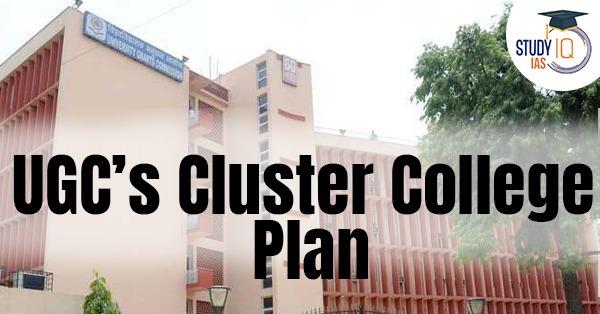Table of Contents
University Grants Commission (UGC)
- University Grants Commission was set up by the Department of Higher Education, Ministry of Education as a statutory body under the University Grants Commission Act 1956.
- University Grants Commission Functions: To coordinate, determine and maintain the standards of university education in India.
- University Grants Commission channels public funds (grants) to higher education institutions in the country.

University Grants Commission: Clustering Plan
- Multi-disciplinary Institutions: The move is aimed at transforming colleges and universities into multi-disciplinary
- Closely located institutions can collaborate with each other to offer innovative programmes in offline, online or distance learning mode.
- Merger of institutions: University Grants Commission has also recommended merger of single-stream institutions with other multi-disciplinary institutions under the same management or different managements.
- Student orientation: University Grants Commission Student orientation programmes should be conducted to familiarise them with the new options available.
- Faculty capacity building: Training has to be provided to the teachers to enable them to teach, train and research in multidisciplinary academic programmes.
University Grants Commission: Reasons
- National Education Policy 2020: University Grants Commission Clustering multi-disciplinary institutions in India is one of the recommendations for higher education in the National Education Policy 2020.
- All higher education institutions (HEIs) have to become multi-disciplinary by 2030.
- Gross Enrolment Ratio (GER): University Grants Commission goal is to increase the Gross Enrolment Ratio in higher education including vocational education from 3% (2018) to 50% by 2035.
- A large number of new institutions will have to be developed to attain these goals.

University Grants Commission: Benefits
- Increase student enrollment: Initially, colleges in cluster will function as affiliated colleges of the university and share their resources to offer multi-disciplinary programmes and guide student research
- Subsequently, the cluster of colleges may be given autonomy in a graded manner before turning into an autonomous degree-granting cluster of colleges.
- University Grants Commission Credit Mobility: Students who would opt for courses because of collaborations and mergers will be able to avail credit mobility between partnering institutions.
- This Credit Mobility would be possible by Academic Bank of Credits (ABC) platform, developed by National e-Governance Division of the Ministry of Electronic and Information Technology (MeitY).
- ABC Platform allows students to open an academic account and add HEIs of interest and store credits earned from them for receiving degrees and diplomas.
- Capacity building of Teachers: The Plan also has recommended capacity-building for faculty. This will help the faculty to teach, train and research in multi-disciplinary academic programmes.
- This would be possible through initiatives like Annual Refresher Programme in Teaching (ARPIT) as well as investment in learning assessment tools.
- University Grants Commission give Opportunity for growth: Cluster plan can help in infrastructure expansion and increasing number of students, departments, administrative and academic functions and research activities.
- Opening avenues for online education: Online Education avenues is also mentioned as a key feature of an HEI that offers multidisciplinary education.
- The University Grants Commission Plan suggests that the Study Webs of Active Learning for Young Aspiring Minds (SWAYAM) portal of the Ministry of Education can help universities provide a host of online courses through the University Grants Commission’s credit framework for SWAYAM.
University Grants Commission: Concerns
- Financial resources: Colleges and other stake-holders need financial resources to sustain college clusters. There is no clarity on source of funding.
- Guidelines approach: Guidelines are not enough to persuade colleges and states to follow directives. There has to be regulations to ensure that states adopt the plans.





















 WhatsApp
WhatsApp